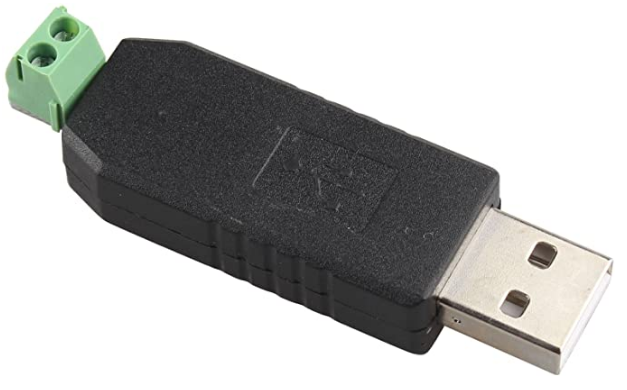Sunways NT4000
The Sunways NT4000 is a solar inverter. It stores data locally, which can be retrieved via eighter a RS485 or a RS232 interface. When using multiple Sunways inverters, you can connect them to each other via the RS485 interface, so that one acts as master and handles the communication.
RS485 Interface
This serial interface is used for communication with the inverters. With the help of for example the HALJIA USB zu RS485 Konverter you can connect the inverters to your computer or Raspberry Pi. For me I could only communicate via RS485 when the inverters where actually receiving solar power.
Software
There are multiple different software solutions to read and write data via software. The software from the manufacturer is called Sunways Monitor 2.0, but it is not available for download anymore.
Another software to communicate with the inverters is the house automation software FHEM. It support many different modules and Prof. Dr. Peter A. Henning created a module for Sunways NT inverters called NT5000. Targeted actually at the NT5000, the inverters NT1800, NT2600, NT4000 and NT6000 have the same protocol. To use the module you firstly need to get your FHEM installation up and running, for example as docker container. There you need to mount a volume for the configuration to be persistent and also pass the USB device to the container.
docker run -d -p 8083:8083 --device=/dev/serial/by-id/usb-1a86_USB2.0-Serial-if00-port0:/dev/ttyUSB0 -v /home/pi/fhem:/opt/fhem fhem/fhemAfter that you need to copy the 70_NT5000.pm file from contrib to the FHEM folder so that the module can be loaded. Test if the module can be loaded by running the command reload NT5000 on the FHEM web interface. If it succeeds, you can then create the solar module object by running define solar NT5000 /dev/ttyUSB0. Then you should see the values of the inverter on the website. Sadly I could not find any option to get support for multiple inverters. So the only way to use this software with multiple inverters would be to wire each inverter to the computer on its own.

